A magnificent, calf-burning hike through two of England’s national parks
Only 50 kilometres apart, the English national parks of the Lake District and Northumberland feel like distant cousins. The Lake District is England’s largest and most visited national park, an eruption of soaring granite mountains criss-crossed by dramatic glacial valleys. It’s home to the country’s deepest lake, 79-metre-deep Wastwater, and its highest peak, 978-metre-high Scafell Pike. In 2023, it attracted a whopping 18 million visitors.
By contrast, Northumberland is England’s least visited and least populated national park. Wedged between Newcastle and the Scottish Borders in the northeast of the country, it’s a soothing landscape of gently rolling hills, forests and moorland. What it lacks in geological drama, it makes up for with historical clout. The park’s archaeological sites chart 10,000 years of human habitation – from Iron Age hill forts to one of the Romans’ most impressive engineering achievements – the snaking 117-kilometre-long Hadrian’s Wall.
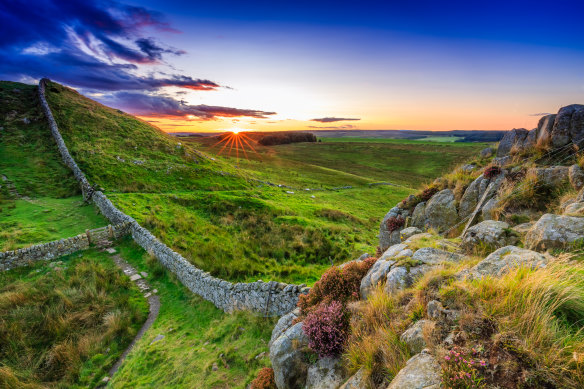
Sunset at Hadrian’s Wall in Northumberland.Credit: Getty/iStockphoto
Given the two parks’ contrasting appeals, one should really visit both. Conveniently, outdoor specialist Wilderness England agrees, which is why it created a week-long itinerary presenting the best bits of each. Far from being a sit-back-and-admire-from-a-distance road trip, it’s an active adventure that plunges us into the heart of both these magnificent landscapes.
The quiet achiever
We begin our historical explorations in Northumberland by visiting what is arguably the greatest legacy of the Romans’ 350-year rule in England. Built about 122AD, Hadrian’s Wall stretched across the breadth of the country, creating a formidable barrier between the occupied lands to the south (known as Britannia) and the unconquered barbarian tribes of the north.
One of the best-preserved sections is near the market town of Hexham and, on our first hike, we follow the meandering fortification as it squirms up and over the dramatic Whin Sill escarpment and down into Sycamore Gap. Until recently, this gully was home to a much-loved sycamore tree, which Kevin Costner fans may recognise from the 1991 hit movie Robin Hood: Prince of Thieves. Inexplicably, two men from Cumbria chopped it down in September 2023. Perhaps they were incensed at the liberty of using a tree in Northumberland to represent one in Sherwood Forest, some 260 kilometres to the south.
We learn more about the Romans at nearby Vindolanda, the excavated remains of a large Roman fort. The sprawling complex is famed for its collection of 2000-year-old wooden tablets that are thought to be the oldest surviving handwritten documents in Britain.
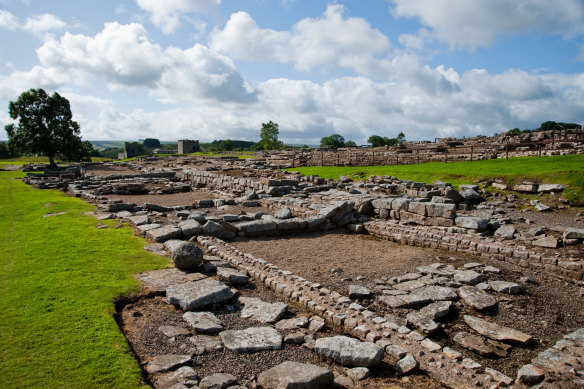
Roman ruins in Northumberland.Credit: Getty/iStockphoto
Our base for this half of the trip is the pretty village of Bamburgh, a quintessentially English huddle of stone houses with three pubs, a tea room and a butcher claiming to be “Carnivore heaven since 1887”. Not that you’d necessarily notice any of this because the hamlet is overshadowed by the gargantuan Bamburgh Castle, an imposing coastal fortification so out of proportion with its surroundings that you’d swear it’s been added using CGI.
Originally a 5th-century Celtic fort, the castle has gone through numerous iterations, among them an Anglo Saxon citadel, a Norman stronghold and more recently as the home of William Armstrong, a Victorian industrialist who bought it in 1894 and financed its restoration.
The castle’s state rooms contain an impressive assortment of weapons, paintings and artefacts, but I’m particularly struck by the sweeping view over the coastline’s undulating sand dunes. Cornwall tends to get all the glory when it comes to English beaches, but Northumberland’s graceful arcs of sand deserve similar acclaim. Despite being here in the height of summer, I pass just a handful of walkers during a sunset stroll.
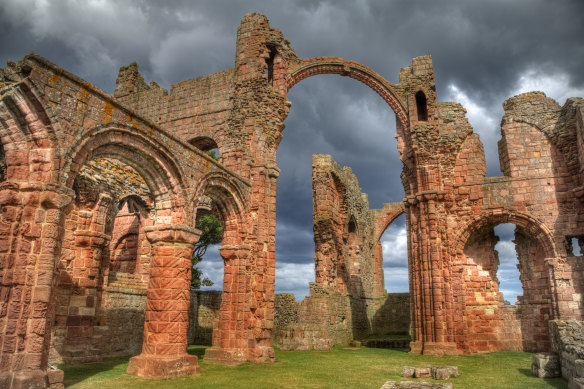
The remains of Lindisfarne’s priory, founded 14 centuries ago.Credit: Getty Images
Having had our fill of Roman history, we jump forward in time to one of England’s most important centres of early Christianity. Lindisfarne, a small island reached via a tidal causeway, was home to a monastery for more than 900 years. Originally founded by St Aidan in 635AD, it became famous thanks to St Cuthbert, whose many reported miracles made it a popular pilgrimage destination.
Today, it’s home to an unexpected array of attractions, including a ruined 12th-century priory, a network of underground lime kilns and a Tudor castle furnished in Arts and Crafts style by the founder of Country Life magazine. The island is in a protected nature reserve and attracts thousands of fur seals and dozens of migratory bird species.
Our most taxing Northumberland hike is in The Cheviots, a billowing landscape of heather-strewn hills dotted with latte-coloured cows and huddles of bleating sheep. The day’s figurative and literal high point is Yeavering Bell, a 361-metre-high eminence crowned with the remains of an Iron Age hill fort. It’s a thigh-testing ascent to the top, but the reward is horizon-blurring views over an intricate countryside mosaic of villages and fields neatly divided by laneways and dry-stone walls.
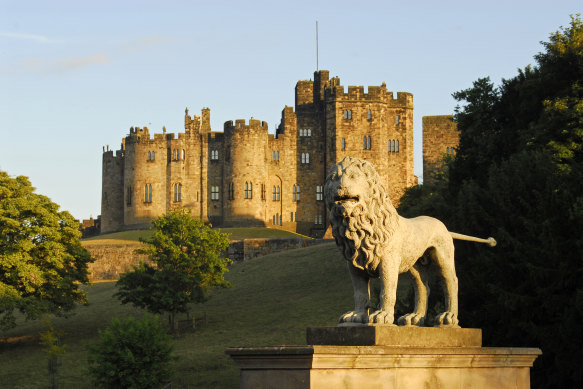
Alnwick Castle, home to the Duke of Northumberland.Credit: Getty Images
Before letting us depart, Northumberland has one more ace up its sleeve: Alnwick Castle. I don’t have space to do it justice here but in summary, the Duke of Northumberland’s home is one of England’s most impressive country estates. Among its many highlights are the suite of stunning state rooms, a fabulous range of gardens and a tour that explains the property’s starring role in two Harry Potter movies. Aspiring quidditch players can even take a broomstick flying lesson.
A restless spectacle
Given its name, you’d be forgiven for assuming that the Lake District’s most arresting topographical feature would be its lakes. They’re certainly picturesque and plentiful (16 in total), but what really strikes you are the mountains in between. Of the 20 highest peaks in England, 19 are in the Lake District.
Scaling these summits became something of an obsession for Alfred Wainwright, a council treasurer who spent 13 years documenting his favourites in a series of guidebooks. Today, bagging all 214 “Wainwrights” has become a popular challenge, with the current record held by American John Kelly, who managed it in the frankly inconceivable time of five days and 12 hours.
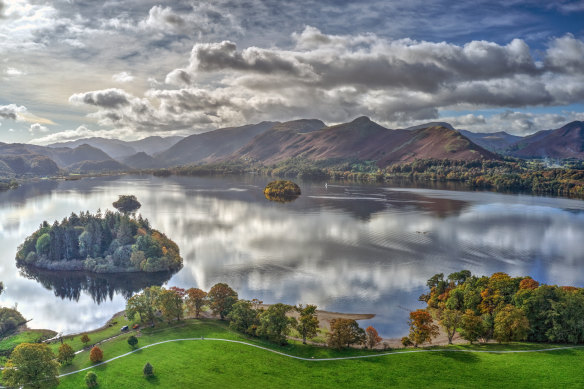
Near Derwentwater, the Lakes District lives up to its name, adding stark and steep mountains.Credit: Getty/iStockphoto
During our first outing we have the less ambitious goal of bagging three – High Crag, High Stile and Red Pike. Still, it’s a considerable step up from our exertions in Northumberland – an 11-kilometre hike with 979 metres of climbing.
Led by an experienced guide, our group of four follows a meandering track lined with algae-stained boulders, colourful wildflowers and the occasional tuft of sheep’s wool. The ascent to each peak is a conversation-killing calf-burner, but the summits reveal calendar-worthy panoramas of blush-pink granite mountains and plunging valleys with ink-blue lakes.
Our home for this part of the trip is the comfortable Royal Oak Hotel in the diminutive village of Rosthwaite. Each day begins with a hearty cooked breakfast and concludes with a generous two-course dinner. Packed lunches are either provided by the hotel or picked up from a cafe en route.
Unlike Northumberland, this is a region where you’ll rarely be short of company. We pass countless other hikers, many of them locals who greet us with a cheery “Yer alright?”
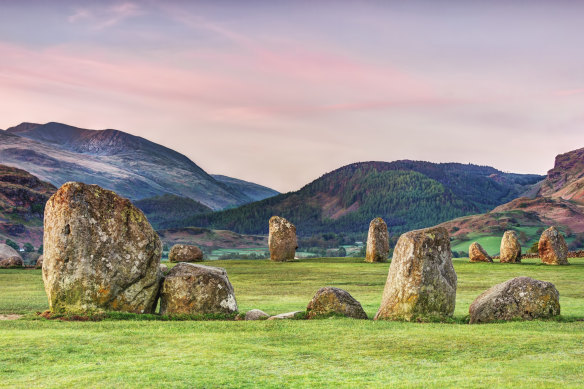
Castlerigg stone circle, constructed thousands of years ago overlooking the Thirlmere Valley.Credit: Getty/iStockphoto
Another of the Lake District’s claims to fame is that it’s England’s wettest region, a fact we learn first-hand during a rain-battered hike over Cat Bells, a 451-metre-high fell that rears up from the shore of Derwentwater. Retreating to the nearby town of Keswick, we take shelter in the Derwent Pencil Museum, an unexpectedly informative attraction that explains the region’s long history of pencil making. Among its many exhibits are spy pencils used during WWII and a 7.9-metre-long yellow pencil that claims to be the world’s largest.
Ever since poet William Wordsworth waxed lyrical about the region’s natural splendours in I Wandered Lonely as a Cloud, people have flocked to the Lake District to gawp at its dramatic landscape. But it’s by no means its only asset. On our last day, we stop at neolithic Castlerigg Stone Circle, thought to have been constructed about 3000BC. Comprising 38 stones in a 30-metre-diameter ring, it’s an atmospheric reminder of a forgotten age. The other striking thing about it? Its spectacular peak-flanked setting overlooking the Thirlmere Valley. Fittingly, nature still has the last word.
THE DETAILS
FLY
Emirates flies to Newcastle via Dubai. From Newcastle, it’s a 1.5-hour drive or a two-hour train ride to Penrith. See emirates.com
WALK
Wilderness England’s seven-day Northumberland and the Lake District tour starts and ends in Penrith and includes accommodation, transfers and most meals. The trip is “blue graded”, meaning it’s suitable for fit and experienced hikers. Cost from £2295 per person, twin share. See wildernessengland.com
MORE
The writer was a guest of Wilderness England and Visit Britain.
Sign up for the Traveller Deals newsletter
Get exclusive travel deals delivered straight to your inbox. Sign up now.